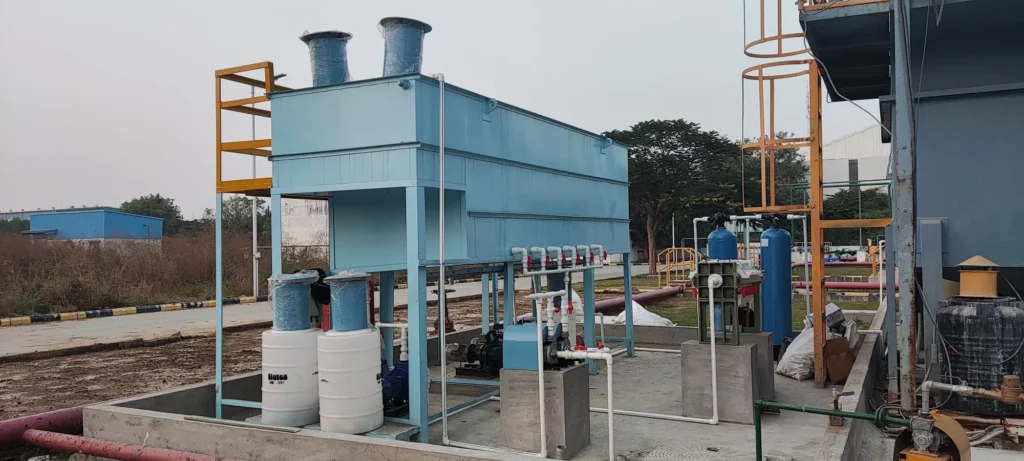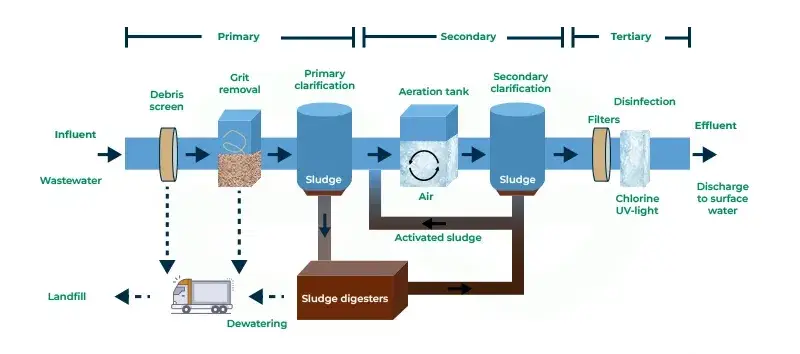Sewage Treatment Plant (STP)
- Home
- Sewage Treatment Plant (STP)
Type Of Services
- Bio Gas
- Demineralization Plant
- Commercial RO Plant
- Industrial RO Plant
- RO Desalination Solutions
- Effluent Treatment Plant (ETP)
- Membrane Bio Reactor (MBR)
- Membrane Aerated Biofilm Reactor (MABR)
- Moving Bed Bio Reactor (MBBR)
- Organic waste composter (OWC)
- Commercial RO Plant
- Sequence Batch Reactor (SBR)
- Sewage Treatment Plant (STP)
- Softener Plant
- Ultra Filtration
- Zero Liquid Discharge Treatment (ZLD)
- Solar Plant
Sewage Treatment Plant (STP)
Sewage treatment plays an important role in ensuring the well-being of our planet. The demand for innovative solutions in wastewater management has led to the rise of sewage treatment plant manufacturer in India. Our dedicated professionals are committed to creating cutting-edge technologies that not only purify wastewater but also contribute to a more sustainable future. Let’s delve into the world of sewage treatment plant manufacturer, exploring their significance, the technology they employ, the challenges they face, and the future prospects of this crucial industry. So, let’s embark on a journey to understand how these manufacturers are helping us tread the path of environmental responsibility. Gallant Aquatech is the leading sewage treatment plant manufacturer in India manufacturing wastewater machines like STP Plants, Effluent Treatment Plant, and Zero Liquid Discharge Plants.

How does a Sewage Treatment Plant work?
Wastewater coming out as effluent from Industries or households enters into raw sewage inlet chambers and then makes its way through a screening chamber where physical separation of organic and inorganic material takes place with the help of a fine and coarse screen. After the raw water moves to the grit removal section where sand, ash as well as clinker is removed and further move towards primary clarifier where sedimentation of solid takes place and excess oil, as well as grease, is removed from the wastewater, helps in reducing the BOD level by almost 15-30 percent. After primary treatment, secondary treatment starts where sewage water or wastewater from the primary tank enters into the aeration tank where sewage water is aerated and microorganism present inside metabolizes the soluble suspended organic matter. The use of aeration tank is to remove the dissolved gases and further oxidize the organic material removing BOD (Biochemical Oxygen Demand) and also reduces the odor of the wastewater. The sewage wastewater from an aeration tank flows towards the secondary settling tank where the separation of biological sludge takes place and in the outlet of the tank, the wastewater is treated with chlorine and final treated water is obtained. The excess sludge from the primary and secondary clarifiers is pumped to sludge thickener to thicken up the sludge which can further be used as a manure in agriculture industries. This is the whole process flow of the Sewage Treatment Plant and one must know it‘s importance in saving water.

Advantages of Compact Sewage Treatment Plant
- Gives 100 percent ROI
- Utilize water efficiently
- Low maintenance cost
- Low operation cost
- Efficient cleaning
STP-Civil Type
Capacity: 10 KLD TO 2 MLD
Technology: MBR / MBBR/UASBR/ SBR
Features:
- Semi-automatic Operation
- Minimum Maintenance Required
- Underground Civil Work (RCC) Construction
- Erection and commissioning by Trained and experienced Team
- Treated Water can use for Irrigation, Gardening, Flushing Purpose
Typical Industries: Large Societies, Hospitals, Hotels, Large Industries, Commercial Complex.
STP-Packaged Type
Capacity: 5- 500 KLD
Technology: MBR / MBBR/UASBR / SBR
Features:
- Semi-automatic Operation
- Easy to transport & Installation
- Erection and commissioning by Trained and experienced Team
- MOC of Tank = MS-FRP (Coated) /MSEP.
- Completely above ground Installation.
- Only Sewage collection tank in Civil (RCC)
Typical Industries:Medium Scale Industries, Housing Complex,
Labour Camps, etc..
Applications
Industries We Serve with STP Plants

STP For Agricultural Industry

STP For Oil & Mining Industry

STP For Hotel Industry

STP For Manufacturing Industry

STP For Residential Societies

STP For Aviation Industry

STP For Automobile Industry


